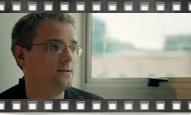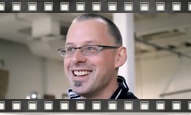2003: Building a better Kiwi web
By 2003, people were realising it could take big money to create an effective website. Even just to get the right domain name for it could be costly, with the government paying $1 million for a single .com.
Track of the Year 2003

The Verlaines - Doomsday (You're Just Too Obscure For Me - 2003)
The classic Verlaines line up of Graeme Downes, Jane Dodd (later an Able Tasman) and Robbie Yeats (world famous Dead C drummer) at the height of their powers deliver this classic 1985 single - which later appeared on the 2003 compilation 'You're Just Too Obscure For Me'. The song title and content was never going to seduce mainstream radio but feel free to hum along, strum along and sing along to this finely crafted pop bullet.- Roger Shepherd
[ Watch Video ]
Track of the Year by Records
The $1 million dollar domain
Tourism New Zealand had launched a well-received portal to attract visitors to the country a few years earlier under the ‘Pure New Zealand’ brand. But, by 2003, the government wanted to lay claim to the newzealand.com domain to give both tourists and business prospects an easy-to-find location to knock on our virtual doors. The problem was that this was already owned by an offshore company called Virtual Countries that had been savvy enough to buy the .com variants of many country names.
So our government took them to the World Intellectual Property Office (WIPO) to claim rights to the domain. Unfortunately, the panel unanimously decided that the New Zealand government not only had no rights over the name (holding no trademark), but had also acted in bad faith and was guilty of reverse hijacking. Our handy duly slapped, we ‘opted’ to purchase the domain from Virtual Countries for NZ$1 million.
Tourism Minister Mark Burton defended the move in parliament upon being questioned by the opposition. He said, "There is no question that this domain will provide an invaluable portal for commercial entry into New Zealand for those interested in tourism, commerce, and industry". Whether the domain had any effect or not, the tourism portion of the site would go on to win Webby awards, the ‘Oscars of the Internet’, in years to come.
The social network phenomenon
A domain, and the site behind it that turned out to be worth hundreds of millions of dollars, was launched in 2003 – myspace.com. Bought by Rupert Murdoch's NewsCorp for US$580 million in 2005, it was a bargain or a ‘complete rip-off’, depending on who you talked to. In 2003, it was just another social network following in the footsteps of the likes of Friendster as a place for people to post personal profiles, share their lives and interact with friends.
MySpace's rapid growth is credited to several features, one of which allows non-humans to create profiles. Early on, this included bands, allowing users to feel closer to their idols – a ’fanning of brands’ that was perfected by Facebook by the end of the decade as it eclipsed MySpace.
One of the biggest problems that sites like Myspace would face was scaling their technical architecture to cope with millions, then tens of millions, and eventually hundreds of millions of users. Back home the site most faced with this problem would be Trade Me, who by 2006 would be responsible for 60% of New Zealand's Internet traffic.
Open Source advocacy doubled
Having spent a cool million on a single domain name, the government was in the mood for cost cutting. So, in 2003, it officially encouraged departments to use ‘Open Source’ (FOSS) software under its e-government directives. Open Source software is encouraged not only because it has no licence fees, but also for the other tenets of openness – freedom to use it for any purpose, to modify the software, to redistribute the software as-is or modified.
While these would not overly matter, or at least be visible to the end users of government services, to those developing the sites they were often viewed as essential both philosophically and to ensure cost and quality of their product.
The same year, a number of private sector individuals and companies came together to form the New Zealand Open Source Society (NZOSS) to promote the use of FOSS in both the government and the commercial space. Their explanation of the benefits of Open Source were echoed by many developers; "software development becomes a collaborative rather than competitive process and from that collaboration comes innovation". The NZOSS likened purchasing ’proprietary’ non-FOSS software to buying a car with the bonnet welded shut – for which you must go to a single dealer for for all repairs or modifications.
Web design goes from hobby to career
The government could have purchased a .geek.nz domain name released that year for a single Sir Apirana Ngata instead of that one expensive .com. Many of those who were actually interested in purchasing these domains were working in the hundreds of ‘web design studios’ around the country – or for a growing number of ‘web teams’ within commercial and government organisations.
What had started as a hobby for many had turned into a career. In 2003, very few had any formal qualification in web design or development, but that didn't stop many from forming profitable companies and over the following years earning international accolades for their work.
With CSS, the Web's design language, being mastered by professional web designers, their sites were starting to appear markedly different from the garish personal pages your average netizen had on MySpace - that echoed the design of early Geocities sites of the '90s. Where one person had created a website in earlier years, it now took a team of many, each with an individual role to create larger, more dynamic sites.
As these web designers started to perfect their pitches, they were increasingly butting heads with advertising agencies which, for the most part, were keen for their clients to keep spending their marketing money in traditional channels like television, radio and print. It wasn't until 2006 that the Interactive Advertising Bureau launched a NZ division and quantified what percentage of business money was spent advertising online versus elsewhere. Whatever the exact figures, there was no denying over the next 5 years that digital was the area of real expansion - both in terms of spend and creativity - in the industry.
Broadband disappoints internationally

New Zealand’s broadband ranking out of 30 OECD nations
New Zealand improves from 25th position in the OECD for broadband uptake to 21. Telecom is accused of overstating its broadband numbers, insisting its entry level DSL at 128kbit/s is justified.
Web designers, advertisers, agencies and digitally savvy brands across the nation were keen for more Kiwis to get broadband to push bigger and better websites down the wider pipes. In 2003 though, they were out of luck. Despite Telecom claiming it could reach 83 per cent of the population with its JetStream DSL service, only two per cent of the population – around 13,000 households – had it; a poor uptake in the four years since launch that put us 25th in the OECD for broadband uptake.
Telecom claimed the number was closer to 44,000, but this included the JetStart package that, at 128kbit/sec, wasn’t actually considered broadband by OECD standards. As an alternative to Telecom's more expensive service, Woosh launched in the same year offering wireless broadband in Auckland, Wellington, Christchurch and Invercargill.
What were your
Kiwi Websites of the Year?
Tomorrow: What the bleat were kiwi bloggers on about in 2004?
All
Anecdote
Event





